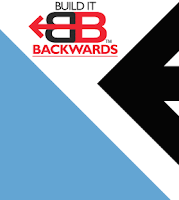 I’m struggling with a manufacturing client that is not able to generate a financial model which can provide comfort to a bank that the company can repay its debts. Without a forecast which is based upon solid and defensible assumptions, this manufacturing company could be forced to obtain capital at much higher interest rates than a bank would charge.
I’m struggling with a manufacturing client that is not able to generate a financial model which can provide comfort to a bank that the company can repay its debts. Without a forecast which is based upon solid and defensible assumptions, this manufacturing company could be forced to obtain capital at much higher interest rates than a bank would charge.
By hiring a third party resource to create a robust, dynamic financial model, the manufacturer could generate multi-period reports that would help the company and its lenders answer such questions as:
· How much capital will I need?
· How long will my cash last under various scenarios?
· How will I be able to repay my loans?
But the client is hesitant to spend the money even though it could potentially save over $150 thousand of annual interest expense. The cost to hire an expert to create the financial model? In this case, less than 5 percent of the savings.
I recently spoke with Daniel Feiman of Build It Backwards, a management consulting and training services firm, which develops financial models for businesses ranging from start-ups to established firms with annual revenues exceeding billions of dollars. Feiman just published “What Everyone Needs to Know About Financial Modeling” and here’s one portion of our discussion I found particularly compelling.
From your lender's perspective, a good financial model understands cash and can answer the three questions shown above. If you cannot answer these cash flow questions for your banker, the teller’s window will be closed."A common mistake in financial models is not having a solid understanding of what CASH is and is not. Revenues are not cash. Gross margins are not cash. Profits are not cash. Only cash is cash. Slight changes in the timing between cash receipt and disbursement - even just a couple of weeks - can bankrupt your business. Therefore, a good model will reflect not only cash flows generated by your firm but also their timing."
If you would like a copy of “What Everyone Needs to Know About Financial Modeling”, click here. Daniel Feiman can be reached at 310-540-6717.
Need help finding the right lender or telling your story the right way for your California business? Read "Matchmaking for Business Loans" and give me a call!
Tags : Financial Models , cash flow , bank loans , Daniel Feiman , Build It Backwards





